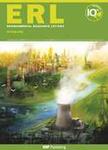版权所有:内蒙古大学图书馆 技术提供:维普资讯• 智图
内蒙古自治区呼和浩特市赛罕区大学西街235号 邮编: 010021

作者机构:Seoul Natl Univ Dept Landscape Architecture & Rural Syst Engn Seoul South Korea Seoul Natl Univ Interdisciplinary Program Agr & Forest Meteorol Seoul South Korea Seoul Natl Univ Interdisciplinary Program Landscape Architecture Seoul South Korea Seoul Natl Univ Res Inst Agr & Life Sci Seoul South Korea
出 版 物:《ENVIRONMENTAL RESEARCH LETTERS》 (环境研究快报)
年 卷 期:2015年第10卷第12期
页 面:124012-124012页
核心收录:
学科分类:0830[工学-环境科学与工程(可授工学、理学、农学学位)] 08[工学] 0706[理学-大气科学]
基 金:National Research Foundation of Korea (NRF) - Korea government (MSIP) [2009-0083527] Research Institute of Agriculture and Life Sciences at Seoul National University National Research Foundation of Korea [2009-0083527] Funding Source: Korea Institute of Science & Technology Information (KISTI), National Science & Technology Information Service (NTIS)
主 题:white roof green roof urban heat island grass CAM albedo NDVI
摘 要:Roof surface materials, such as green and white roofs, have attracted attention in their role in urban heat mitigation, and various studies have assessed the cooling performance of roof surface materials during hot and sunny summer seasons. However, summers in the East Asian monsoon climate region are characterized by significant fluctuations in weather events, such as dry periods, heatwaves, and rainy and cloudy days. This study investigated the efficacy of different roof surface materials for heat mitigation, considering the temperatures both at and beneath the surface of the roof covering materials during a summer monsoon in Seoul, Korea. We performed continuous observations of temperature at and beneath the surface of the roof covering materials, and manual observation of albedo and the normalized difference vegetation index for a white roof, two green roofs (grass (Poa pratensis) and sedum (Sedum sarmentosum)), and a reference surface. Overall, the surface temperature of the white roof was significantly lower than that of the grass and sedum roofs (1.1 degrees C and 1.3 degrees C), whereas the temperature beneath the surface of the white roof did not differ significantly from that of the grass and sedum roofs during the summer. The degree of cloudiness significantly modified the surface temperature of the white roof compared with that of the grass and sedum roofs, which depended on plant metabolisms. It was difficult for the grass to maintain its cooling ability without adequate watering management. After considering the cooling performance and maintenance efforts for different environmental conditions, we concluded that white roof performed better in urban heat mitigation than grass and sedum during the East Asian summer monsoon. Our findings will be useful in urban heat mitigation in the region.